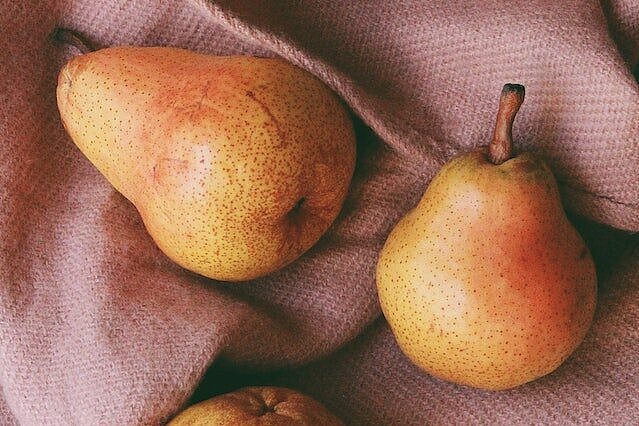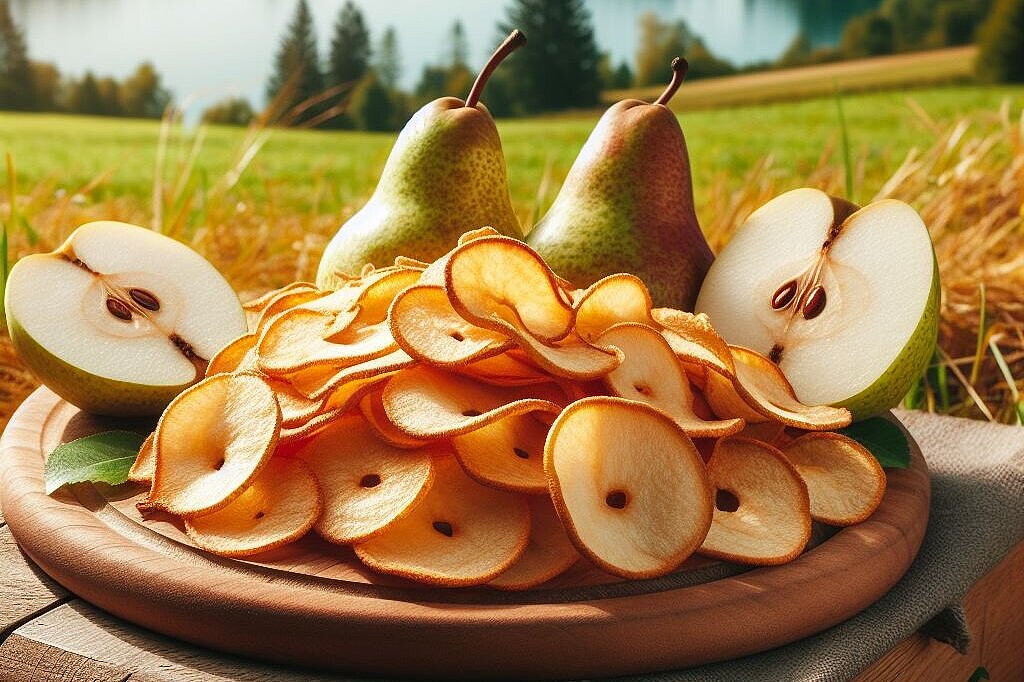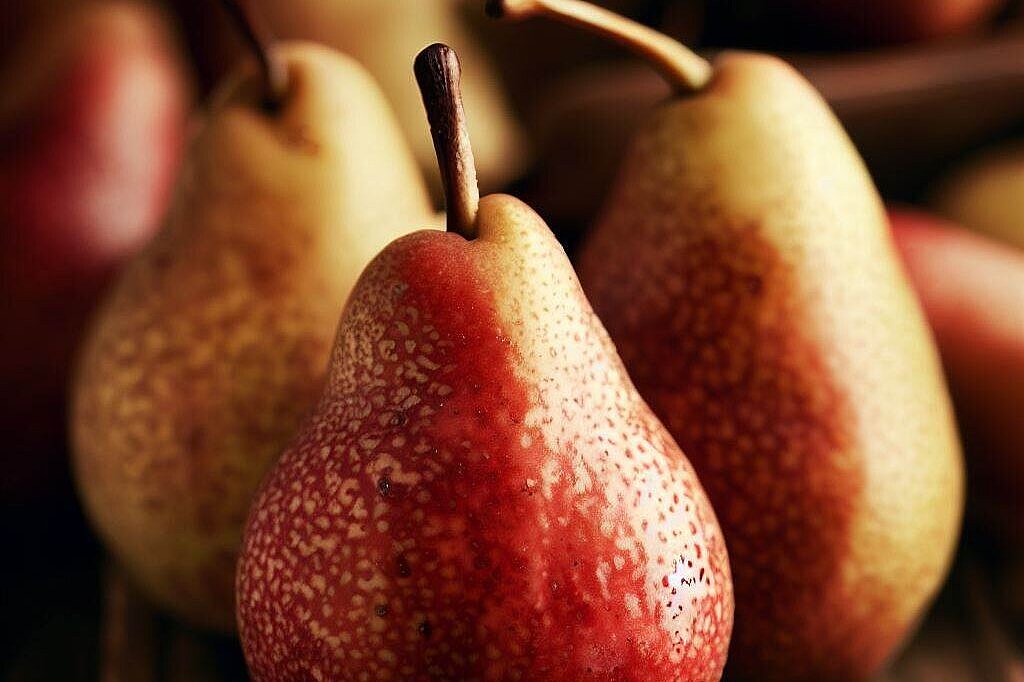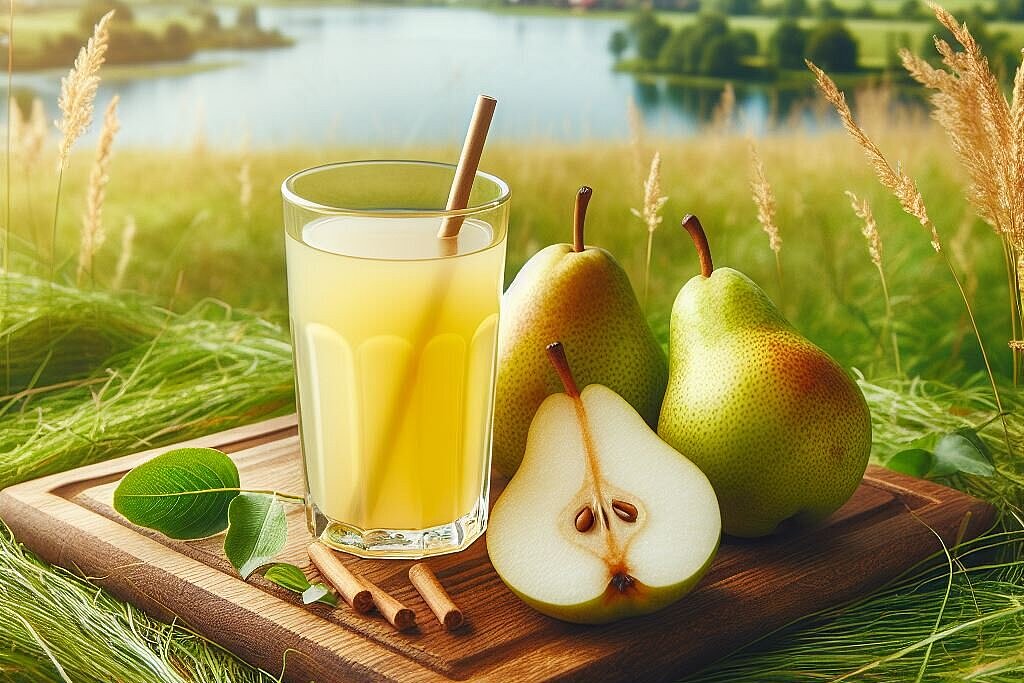Bollweiler pear

You may never have heard of the Bollweiler pear, but this fruit is more than just a cross between a pear and a serviceberry. It has a sweet and sour taste and a red skin reminiscent of a rose hip. The Bollweiler pear is only known in cultivation and was first discovered in Alsace in the 17th century. It grows into a small tree with a broad crown and can be used both as an ornamental plant and as a fruit tree.
But what does the Bollweiler pear have to do with your dog? Can your dog eat this fruit and what health benefits and disadvantages does it have? In this article, you will find out more about this special ingredient and how you can offer it to your dog.
Benefits of the Bollweiler pear for dogs
The Bollweiler pear contains many vitamins, minerals and fiber that are good for your dog's digestion and immune system. It also has a high content of pectin, a soluble fiber that can regulate blood sugar levels and lower cholesterol. Pectin also has a detoxifying effect and binds heavy metals in the intestines.
The Bollweiler pear is also low in calories and is therefore suitable as a healthy snack or as a feed supplement. It tastes sweet and fresh and can be fed raw or cooked. They can also be processed into jam or compote or dried.
Disadvantages of the Bollweiler pear for dogs
Bollweiler pears don't have many disadvantages for dogs, but there are a few things to be aware of. Firstly, the skin of the fruit contains small hairs, which can cause irritation in the mouth of sensitive dogs. It is therefore advisable to peel or at least wash the fruit thoroughly before feeding.
Secondly, the Bollweiler pear can cause flatulence or diarrhea in some dogs if eaten in large quantities. This is because the fruit contains a lot of sugar and can affect the intestinal flora. It is therefore advisable to feed only small portions and observe the dog's reaction.
The Bollweiler pear is an interesting ingredient for your dog that offers many health benefits. It is rich in vitamins, minerals and fiber and has a pleasant taste. You can give them to your dog raw or cooked or process them into various products.
However, you should make sure to peel or wash the fruit beforehand to avoid possible irritation. You should also not feed too much to avoid gastrointestinal problems.
Properties 12
Are you looking for other ingredients with a specific property?
Just click on them to find more.
If you notice any signs of hypersensitivity or poisoning in your dog, you should see your vet immediately. We are not a substitute for a vet, but we try to be as accurate as possible. Every dog reacts differently and we recommend you get a second opinion or consult your vet if in doubt.
Stay healthy and take good care of your four-legged friend!😊
Similar to Bollweiler pear
Pears are fruit that grows from trees. There are many different varieties of pears, which differ in shape, color, taste and ripening time. Most pears are green, yellow or red and have a soft, juicy...
Pear potato chips are thin slices of fresh pears that are dried in the oven or dehydrator. During the drying process, the pears lose most of their water content and become crispy and aromatic. Pear...
Bartlett pears are a type of pear known for their sweet and juicy fruit. They are rich in vitamins, minerals and fiber. Rich in nutrients: Bartlett pears contain many nutrients such as vitamin C,...
Pear juice is a fruit juice made from pears. Pears are a type of fruit that belongs to the pome family and originally comes from Asia. There are many different varieties of pears, which differ in...



